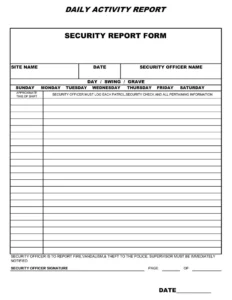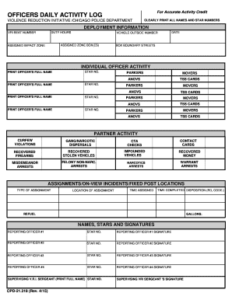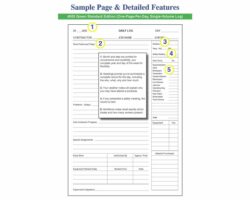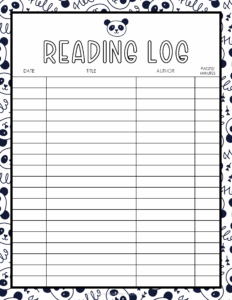Welcoming a new baby into your life is an incredibly joyful, yet often overwhelming, experience. The days blend into nights, and the sheer volume of “firsts” combined with endless feedings, diaper changes, and tiny naps can make it feel like your brain is constantly running on empty. It is easy to forget when the last feed was, or how long that precious nap actually lasted, especially when you are navigating sleep deprivation and a steep learning curve. This wonderful chaos, while beautiful, often calls for a little bit of organization to keep things running smoothly.
That is where a reliable tracking system comes into play. Keeping tabs on your little one’s routines, no matter how unpredictable they may seem initially, can provide invaluable insights and a much-needed sense of control. It helps you understand their emerging patterns, anticipate their needs, and effectively communicate with other caregivers. Having a clear record offers peace of mind and equips you with the data you need for pediatrician visits, making the early months a little less foggy and a lot more manageable.
Why Keeping a Baby Activity Log is a Game-Changer for New Parents
Embarking on the parenting journey with a newborn often feels like being handed a complex puzzle without instructions. Every cry, every gurgle, every stretch is a piece of information you are trying to decipher. A baby activity log acts as your personal instruction manual, slowly but surely revealing the unique rhythm of your child. By diligently recording daily events, you begin to spot patterns in their sleep, feeding, and awake times, transforming what once seemed like random occurrences into predictable routines. This not only empowers you as a parent but also ensures seamless communication with anyone else caring for your baby, be it a partner, grandparent, or nanny, as everyone will be on the same page regarding the baby’s last meal or nap.
Understanding your baby’s sleep patterns is one of the most significant benefits of consistent logging. Is their wake window getting longer? Are they consolidating naps? How long do they typically sleep through the night after a full feeding? These are crucial questions that can be answered by reviewing your log. Over time, you can use this data to gently guide your baby toward more predictable sleep schedules, which, let us be honest, is a dream come true for any sleep-deprived parent. It removes the guesswork and provides concrete evidence of progress or areas that might need a little adjustment.
Similarly, tracking feeding is vital, particularly for newborns. Whether you are breastfeeding, formula feeding, or a combination, knowing when and how much your baby has eaten ensures they are getting adequate nutrition. For breastfeeding mothers, it helps monitor feeding frequency and duration, which can be important for milk supply and detecting potential issues. For formula-fed babies, it confirms they are consuming the recommended amounts and helps establish a feeding schedule that works for everyone. This detailed record is especially important during those initial weeks when weight gain is closely monitored by pediatricians.
What to Track in Your Baby Daily Activity Log
When creating or choosing a baby daily activity log template, consider including the most essential categories that offer the clearest picture of your baby’s day. While you can customize it to your specific needs, a comprehensive log typically covers a few key areas that are crucial for monitoring health and development.
* Feedings: Note the time, type (breast milk or formula), amount (for bottles), and duration (for breastfeeding).
* Diapers: Record the time and whether it was wet, dirty, or both. This is a primary indicator of hydration and digestion.
* Sleep: Document the start and end times of all naps and overnight sleep, along with the total duration.
* Medications: If your baby is on any medication, record the time and dosage administered.
* Mood and Observations: A brief note on your baby’s general disposition, any fussiness, or unusual behaviors can be incredibly helpful.
* Activities: Jot down tummy time, playtime, or any special moments.
Having this information readily available proves invaluable during doctor visits. Instead of trying to recall specifics from a hazy memory, you can present accurate data about feeding habits, sleep cycles, and diaper output, allowing your pediatrician to provide more precise guidance and address any concerns effectively.
How to Effectively Use Your Baby Daily Activity Log Template
Once you have chosen or created your preferred baby daily activity log template, the next step is to integrate it seamlessly into your daily routine. The effectiveness of any tracking system lies in its consistent use and accessibility. Consider where you spend most of your time with your baby and place the log within easy reach. This might be on the kitchen counter, next to the changing table, or even on a dedicated clipboard in the nursery. If you prefer a digital solution, make sure the app is easily accessible on your phone or tablet with minimal taps. The goal is to make logging an effortless habit, not a chore that adds to your already busy day.
Don’t strive for absolute perfection, especially in the early days. There will be times when you forget to log a diaper change or a short nap, and that is perfectly okay. The purpose of the log is to provide an overall picture and identify trends, not to be a flawless minute-by-minute account. A few missed entries will not invalidate the entire record. Focus on getting the majority of the information down, and be gentle with yourself when you slip up. The consistency over time is what truly makes the data valuable and insightful for understanding your baby’s development.
Involve all caregivers in the logging process. If your partner, grandparents, or a babysitter are looking after your baby, ensure they understand how to use the template and encourage them to contribute. This creates a continuous, shared record that benefits everyone. It eliminates the need for constant verbal updates and ensures that important information is never lost in translation. A shared log fosters teamwork and helps maintain a consistent routine for your baby, regardless of who is providing care at any given moment.
Regularly review your log. Taking a few minutes each day or week to look over the entries can reveal fascinating insights. You might notice your baby naturally falls into a predictable feeding schedule around a certain age, or that their naps are consistently shorter on days with a lot of external stimulation. This review process allows you to anticipate your baby’s needs, adjust your own schedule accordingly, and feel more in tune with their unique personality and developmental stage. It empowers you to make informed decisions about routines and helps you celebrate the small victories in their growth.
Embracing the use of a daily activity log for your baby can truly transform the early parenting experience. It offers a structured way to navigate the often unpredictable world of newborn care, providing clarity amidst the beautiful chaos. By meticulously tracking their feedings, sleep, and developmental milestones, you are not just recording data; you are actively learning to understand your child’s individual cues and patterns, fostering a deeper connection and more responsive caregiving.
This simple organizational tool can alleviate a significant amount of stress and uncertainty that often accompanies new parenthood. It empowers you with valuable insights, strengthens communication among caregivers, and ensures you have all the necessary information for those important pediatrician visits. Ultimately, a well-maintained baby activity log is a testament to your dedication, helping you cherish the precious moments while feeling confident and prepared for the journey ahead with your little one.



